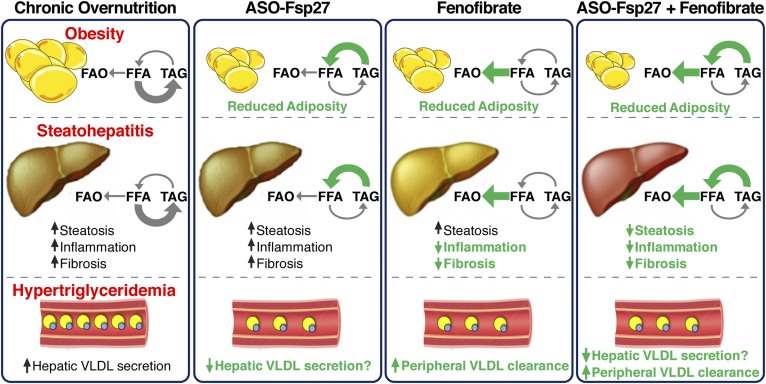Fig. 8.
ASO-Fsp27 and fenofibrate combined therapy. Chronic overnutrition results in obesity, fatty liver disease, and dyslipidemia. Under those conditions, therapeutic reduction of FSP27 (e.g., by silencing with ASOs) promotes enhanced lipolytic activity at the surface of the LD. In the hepatocyte, for unknown reasons the resulting increase in FFA is not efficiently oxidized in the mitochondria, leading to no substantial changes in hepatic steatosis. In contrast, in the adipose tissue of the same animals, FFA are likely secreted into circulation, leading to significantly reduced adiposity. Silencing FSP27 also reduces circulating VLDL-TAG, probably by decreasing the pool of TAG available for secretion. Activation of PPARα (e.g., by fenofibrate) has well-recognized anti-inflammatory, antifibrotic, and hypotriglyceridemic effects but cannot efficiently promote increased lipid oxidation in the hepatocyte. Presumably under those conditions, LD-associated, PPARα targets (FSP27, PLIN2, PLIN5) limit the availability of substrates toward the mitochondria. Combination therapy including ASO-Fsp27 and fenofibrate allows the mobilization of LD-stored lipids and enhances their oxidation. In the liver, these synergistic effects normalize TAG contents and further reduce markers of inflammation and fibrosis. FAO, fatty acid oxidation.

